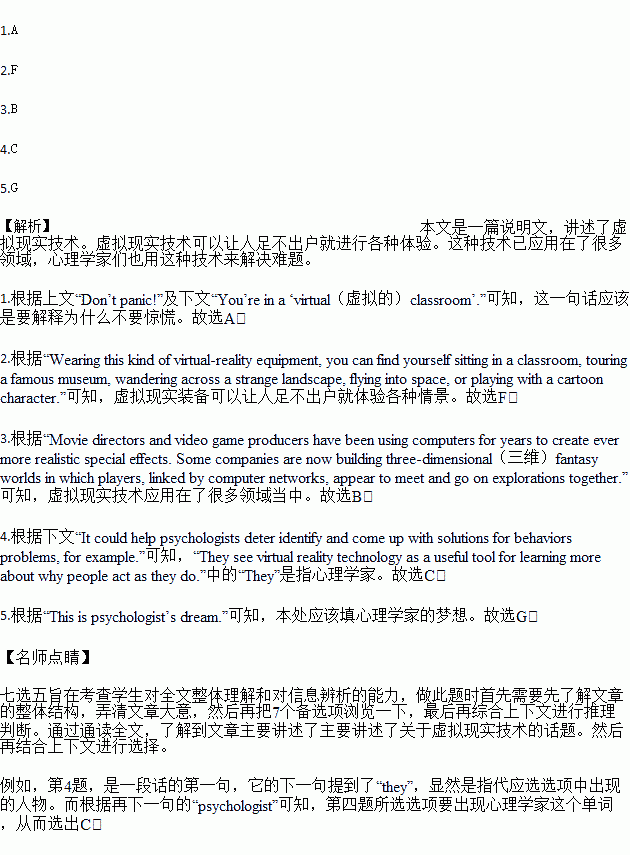ÌâÄ¿ÄÚÈÝ
You are sitting on the desk. A teacher is writing on the blackboard. Kids are yelling in the playground outside. A book falls off the desk next to you. Suddenly, the teacher hands you a pop quiz.
Don¡¯t panic! 1. You¡¯re in a ¡°virtual£¨ÐéÄâµÄ£©classroom¡±. Everything you see and hear is coming to you through a computer-operated display that you¡¯re wearing on your head like a pair of very big glasses. Wearing this kind of virtual-reality equipment, you can find yourself sitting in a classroom, touring a famous museum, wandering across a strange landscape, flying into space, or playing with a cartoon character. 2. Virtual-reality equipment that delivers images and sounds directly to your eyes and ears makes these fake worlds seem lifelike.
Unlike the classroom, the technology is real. It¡¯s a type of technology that uses computer programs to imitate real world situation. 3. Movie directors and video game producers have been using computers for years to create ever more realistic special effects. Some companies are now building three-dimensional£¨Èýά£©fantasy worlds in which players, linked by computer networks, appear to meet and go on explorations together.
4. They see virtual reality technology as a useful tool for learning more about why people act as they do. It could help psychologists deter identify and come up with solutions for behaviors problems, for example.
¡°We¡¯ve spent the last 100 years looking for certain laws in how people interact with the real world,¡± says psychologist Albert. ¡° 5. This is psychologist¡¯s dream.¡±
A. You aren¡¯t actually in school.
B. This technology has been used in many fields.
C. Some psychologists are also getting into the act.
D. Grown-ups, too, stand a chance of benefiting from this technology.
E. As part of one classic test, you watch letters flashed on a computer screen.
F. You don¡¯t have to leave your room to experience all that mentioned above.
G. Now, we¡¯ve got a powerful tool that lets us create worlds and see how people perform.

